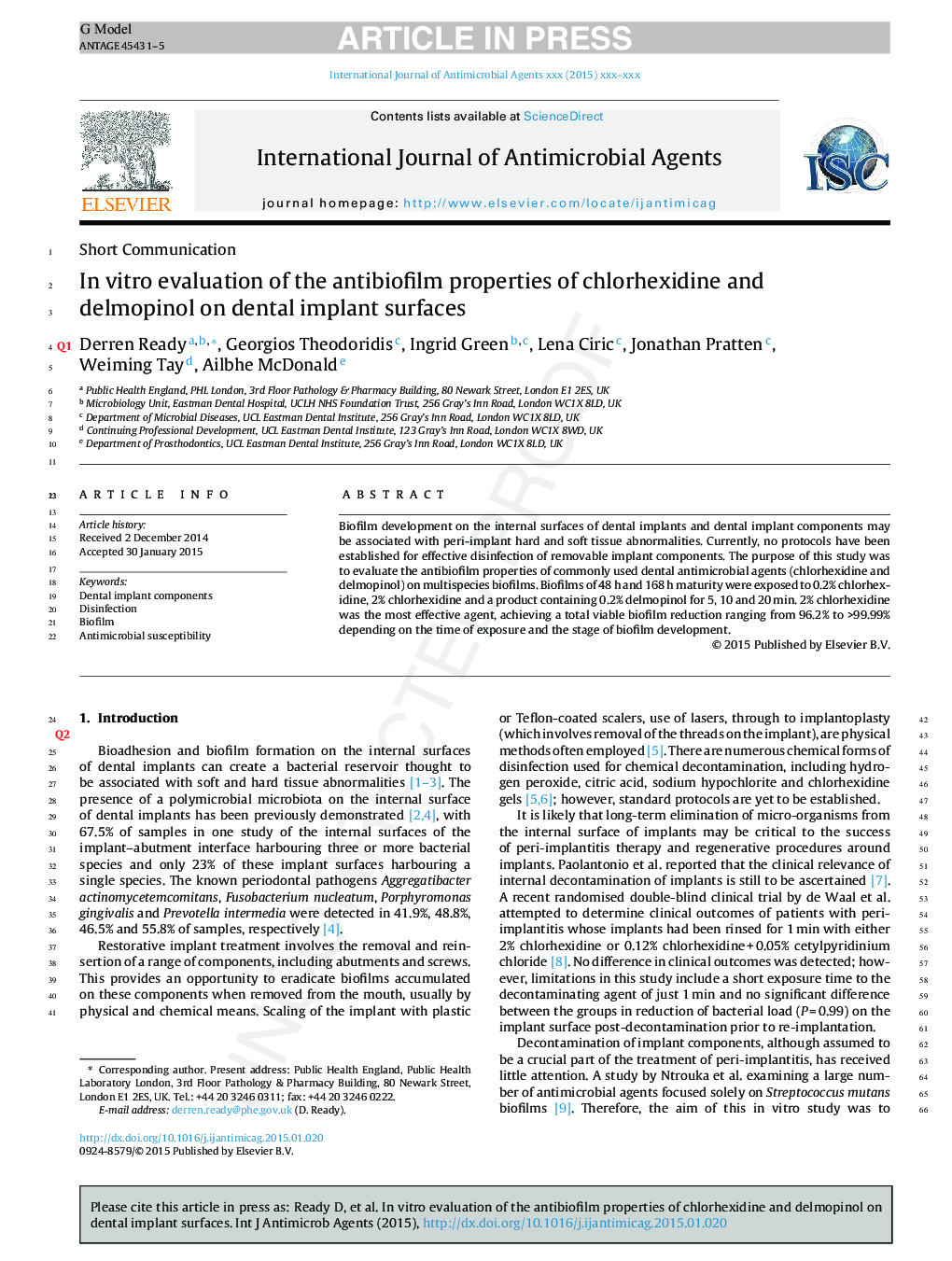| Article ID | Journal | Published Year | Pages | File Type |
|---|---|---|---|---|
| 6117846 | International Journal of Antimicrobial Agents | 2015 | 5 Pages |
Abstract
Biofilm development on the internal surfaces of dental implants and dental implant components may be associated with peri-implant hard and soft tissue abnormalities. Currently, no protocols have been established for effective disinfection of removable implant components. The purpose of this study was to evaluate the antibiofilm properties of commonly used dental antimicrobial agents (chlorhexidine and delmopinol) on multispecies biofilms. Biofilms of 48Â h and 168Â h maturity were exposed to 0.2% chlorhexidine, 2% chlorhexidine and a product containing 0.2% delmopinol for 5, 10 and 20Â min. 2% chlorhexidine was the most effective agent, achieving a total viable biofilm reduction ranging from 96.2% to >99.99% depending on the time of exposure and the stage of biofilm development.
Related Topics
Life Sciences
Immunology and Microbiology
Applied Microbiology and Biotechnology
Authors
Derren Ready, Georgios Theodoridis, Ingrid Green, Lena Ciric, Jonathan Pratten, Weiming Tay, Ailbhe McDonald,
